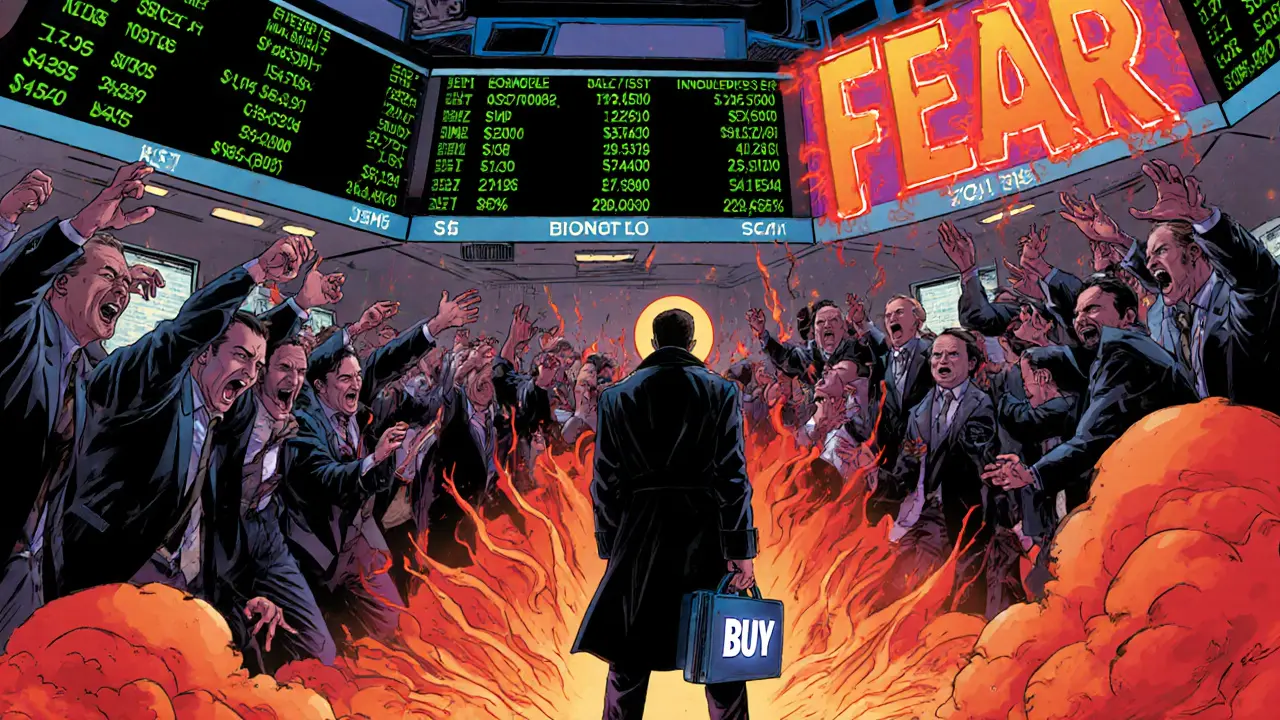Contrarian Sentiment Investing: Turn Fear and Greed into Profit
Learn how to profit from market fear and greed using contrarian sentiment investing. Discover key indicators, risk controls, tools, and a step‑by‑step trade example.
When you hear people talk about VIX, the CBOE Volatility Index that tracks expected stock market swings. Also known as the "fear gauge," it reflects how investors anticipate price changes over the next 30 days. VIX isn’t just a number; it’s a real‑time snapshot of market anxiety that can guide everything from day‑trading tactics to long‑term portfolio buffers.
Understanding the VIX starts with its core component: implied volatility, the market’s forecast of how wildly an asset will move. Implied volatility feeds the VIX calculation by aggregating option prices on the S&P 500. When traders buy more puts and calls to hedge or speculate, option premiums rise, pushing implied volatility higher and, in turn, lifting the VIX. This chain—options pricing → implied volatility → VIX—creates a clear semantic link: the VIX *encompasses* implied volatility.
The index is managed by the CBOE, the Chicago Board Options Exchange that pioneered volatility tracking. The CBOE designs the VIX formula, updates it with new contract data, and ensures the index stays relevant as market structures evolve. Because the CBOE also offers futures and options on the VIX itself, investors can trade the gauge directly, turning market sentiment into a tradable asset.
First, the VIX serves as a barometer for market sentiment. A soaring VIX often signals fear, uncertainty, or a looming correction, while a low VIX points to complacency or a steady rally. By monitoring these swings, traders can time entry and exit points more wisely. Second, risk management teams lean on the VIX to size positions. When the index spikes, they may tighten stop‑loss orders or add hedges to protect portfolios. Conversely, a calm VIX environment can encourage higher exposure.
Third, the VIX has crossed over into crypto markets. Bitcoin’s own volatility index mirrors many of the same dynamics—option activity, implied volatility, and rapid sentiment shifts. Readers of our site often compare the traditional VIX to crypto‑specific gauges to gauge cross‑asset risk. This makes the VIX a bridge between stock and digital asset worlds, helping investors see where risk is clustering.
Finally, the VIX influences other related concepts like market depth, liquidity, and even macro‑economic expectations. When central banks signal policy changes, implied volatility can react before any price moves, nudging the VIX up or down. Recognizing these connections lets you anticipate broader market moves before they fully unfold.
Below you’ll find a curated set of articles that dive deeper into these themes. From dissecting how options drive implied volatility to exploring the VIX’s role in crypto risk assessment, each piece adds a practical layer to the fundamentals laid out here. Ready to see how the VIX can sharpen your trading edge? Let’s explore the collection below.

Learn how to profit from market fear and greed using contrarian sentiment investing. Discover key indicators, risk controls, tools, and a step‑by‑step trade example.